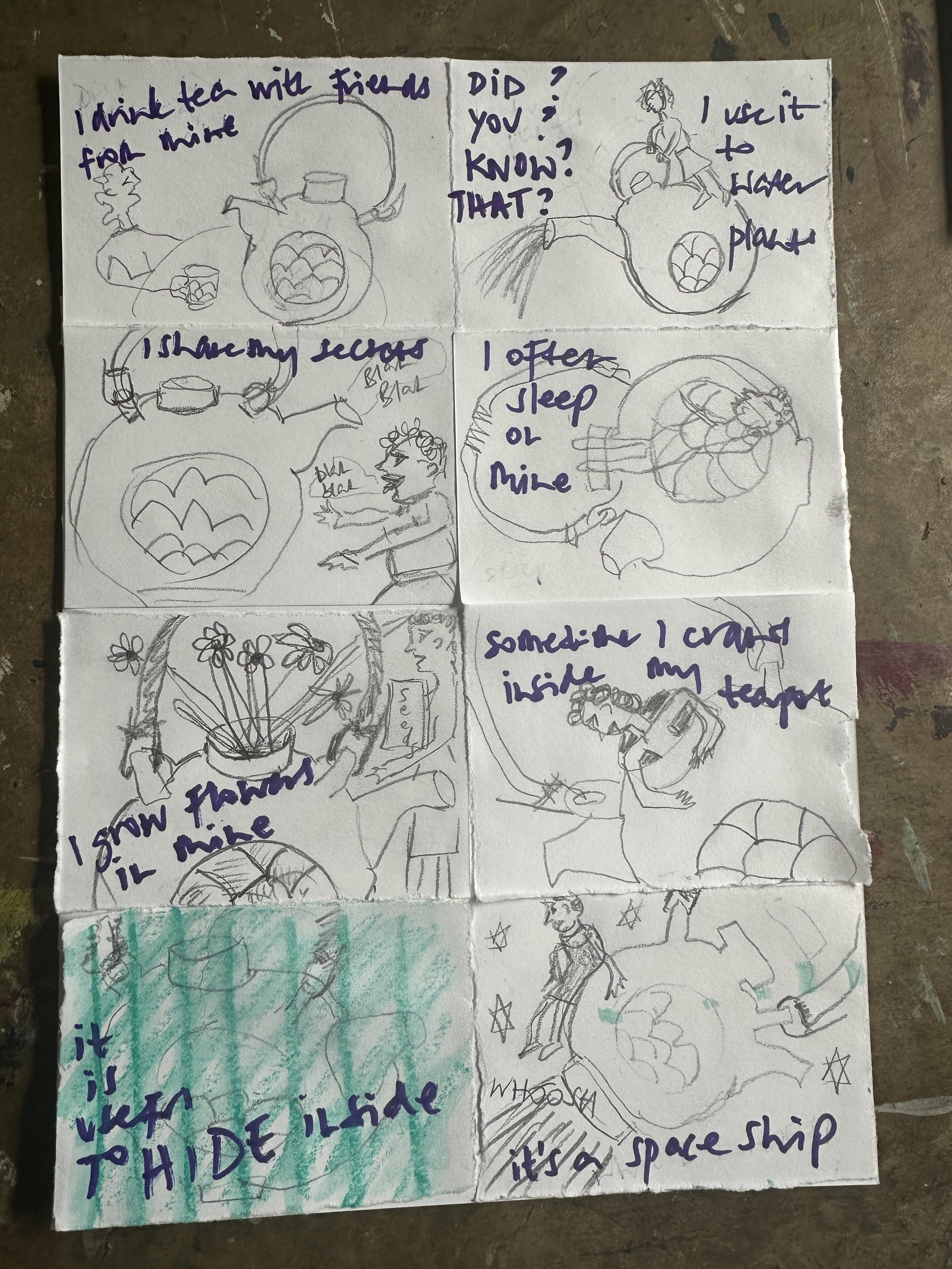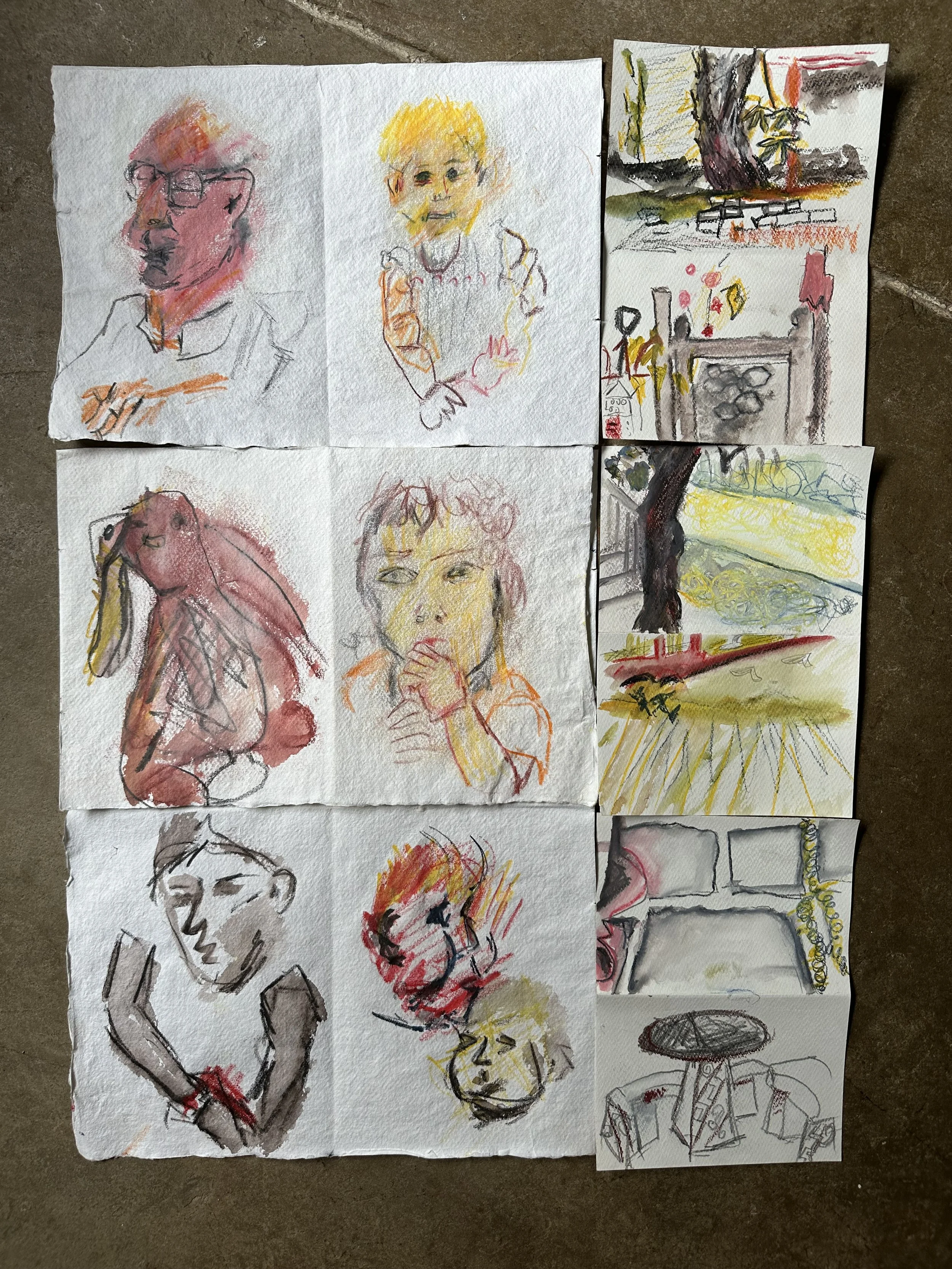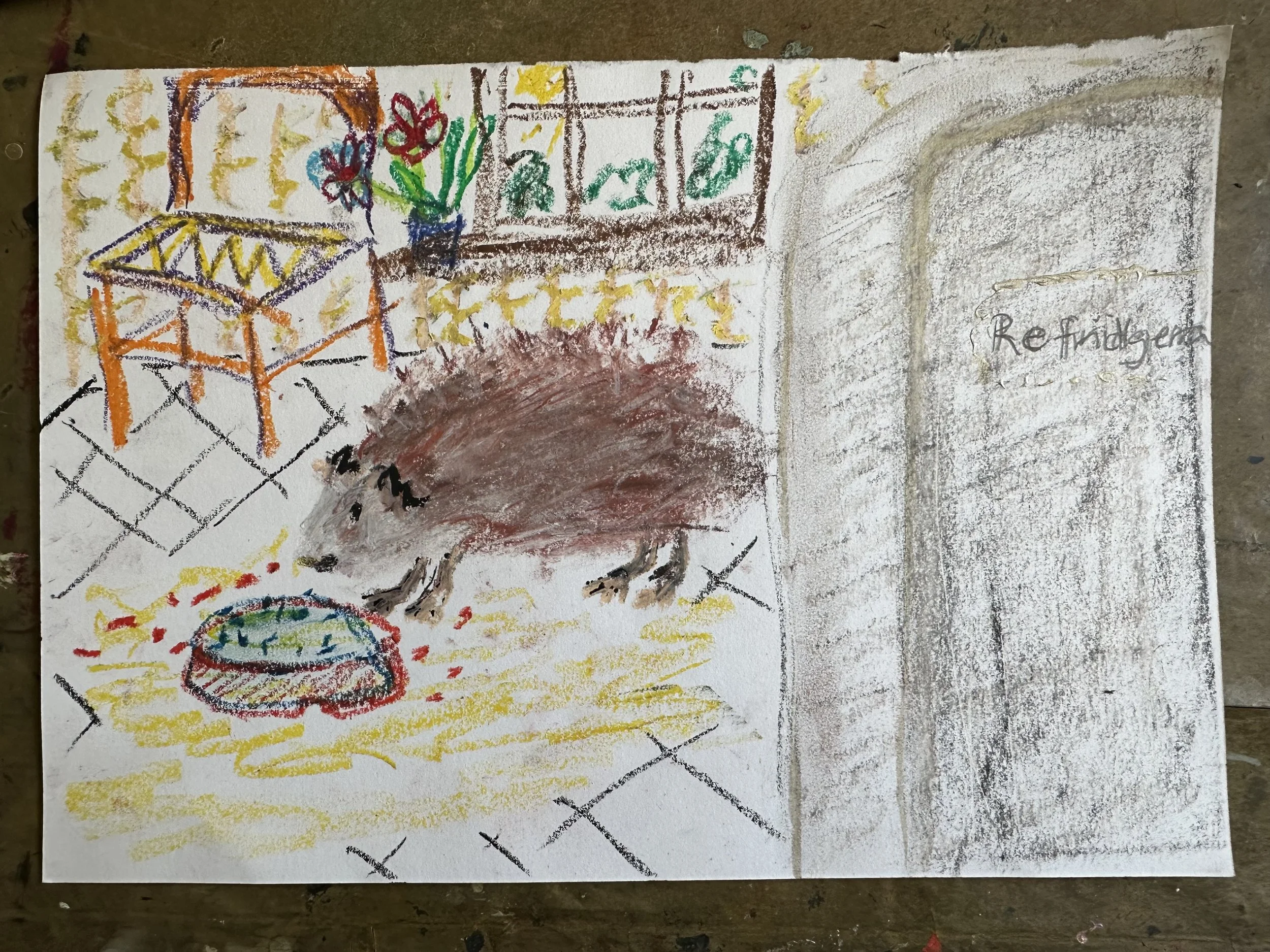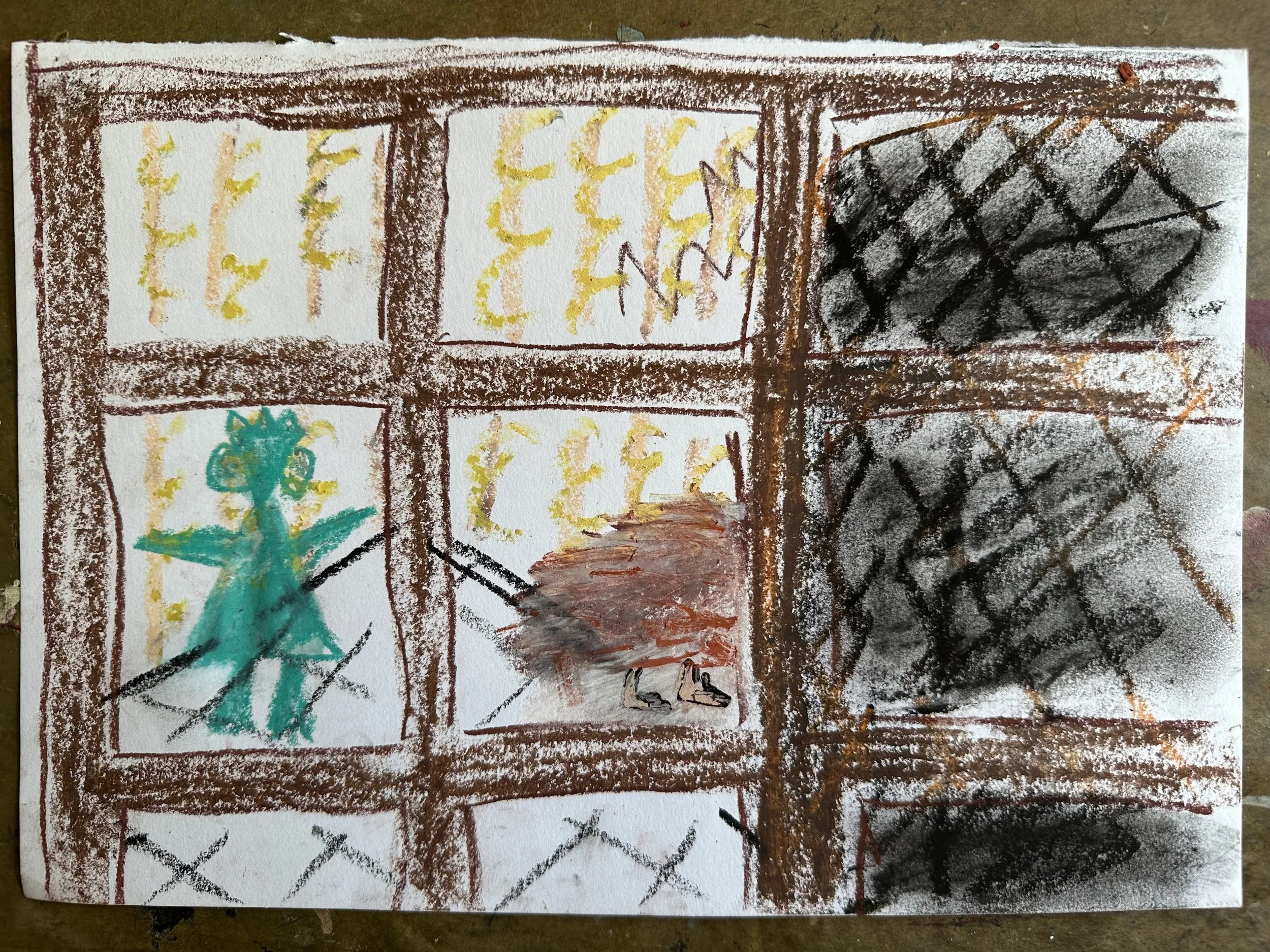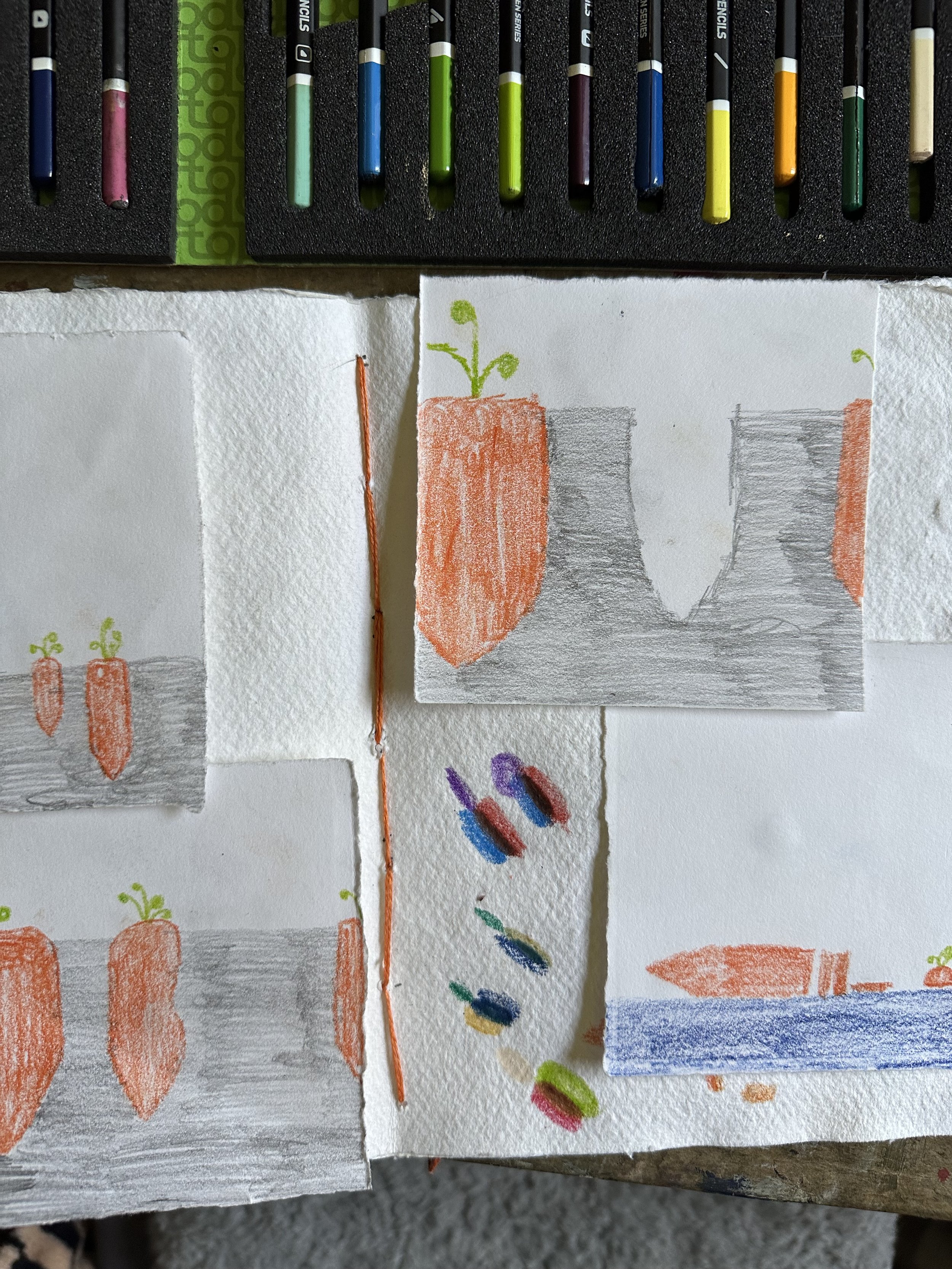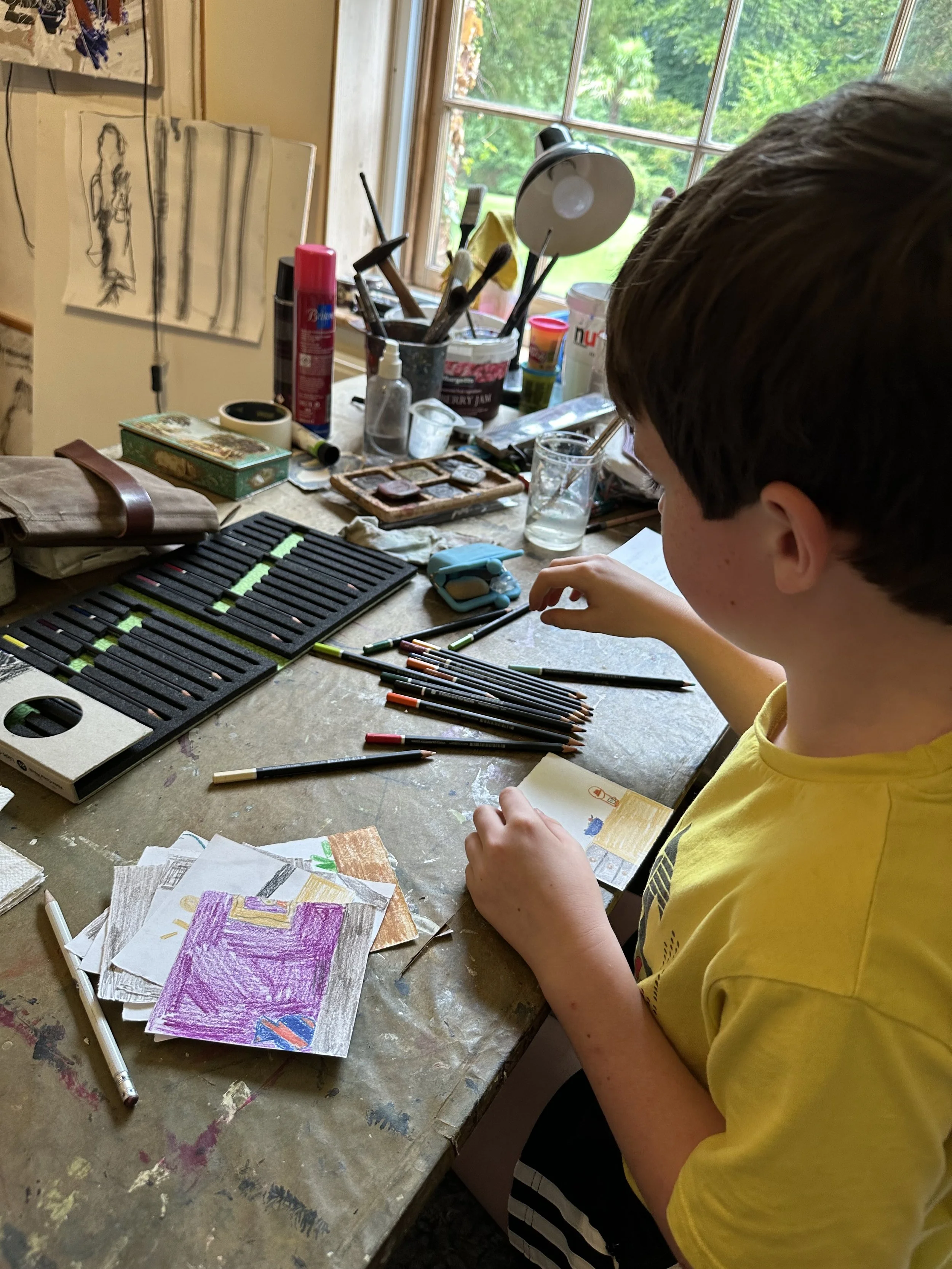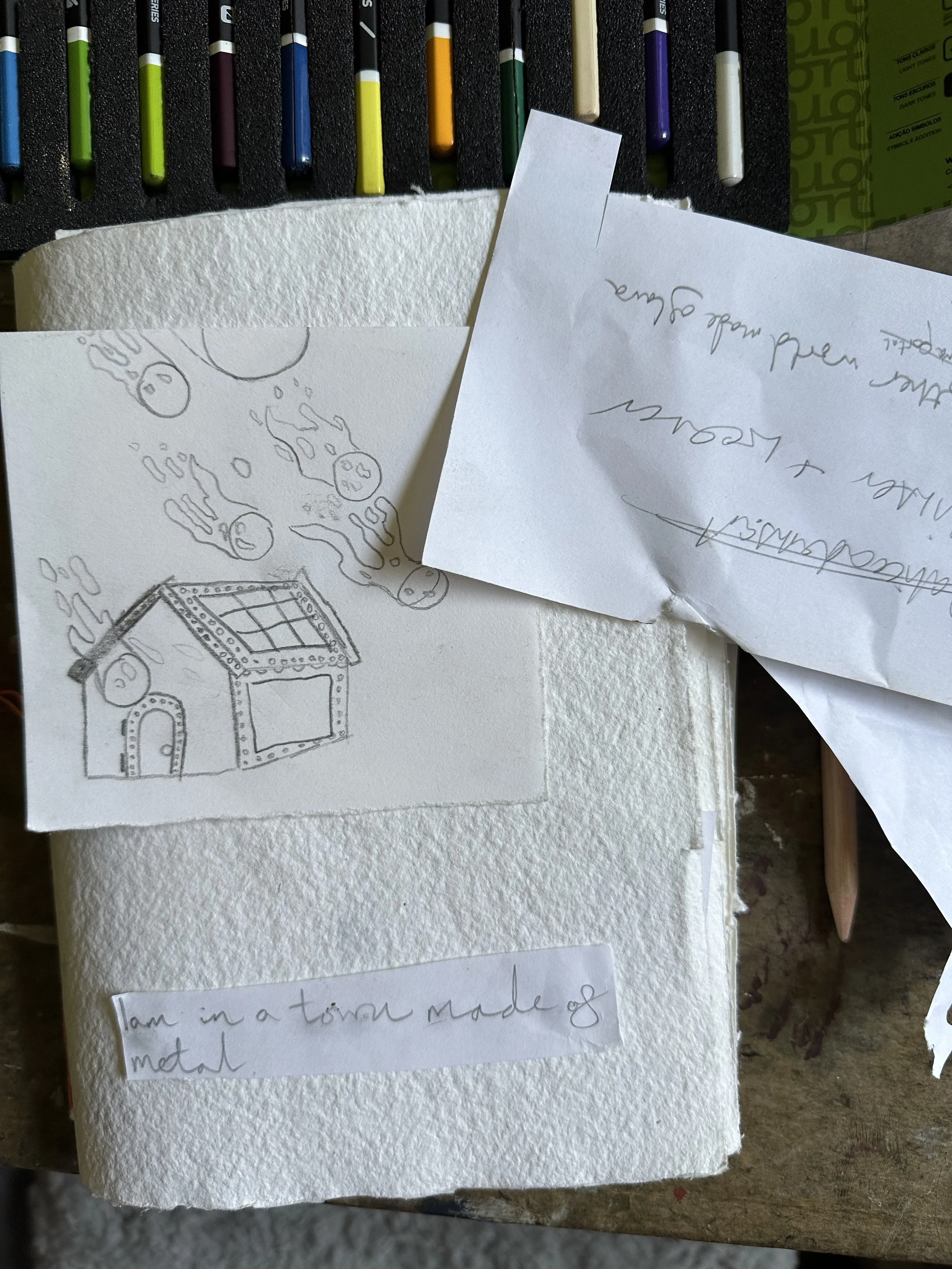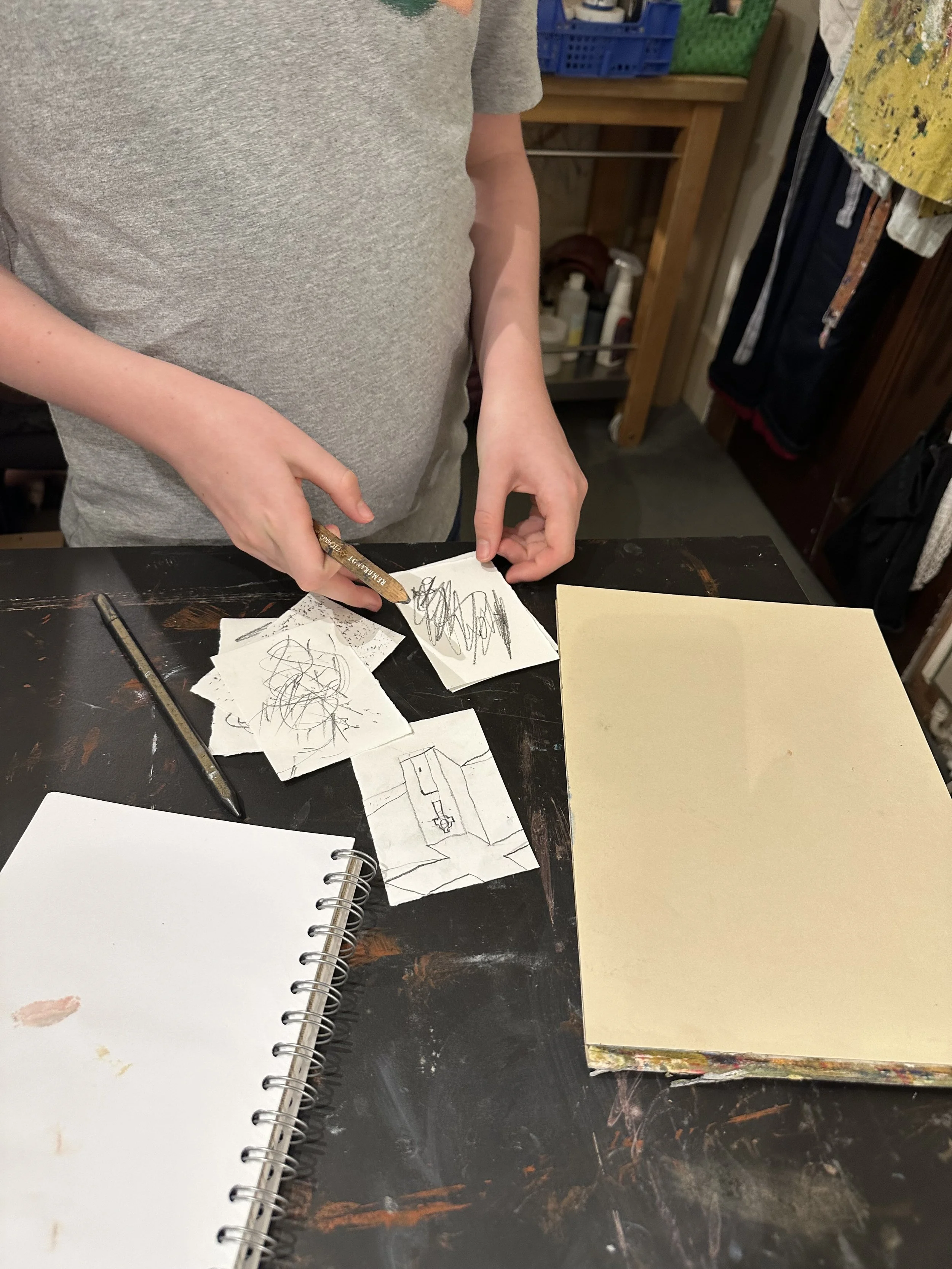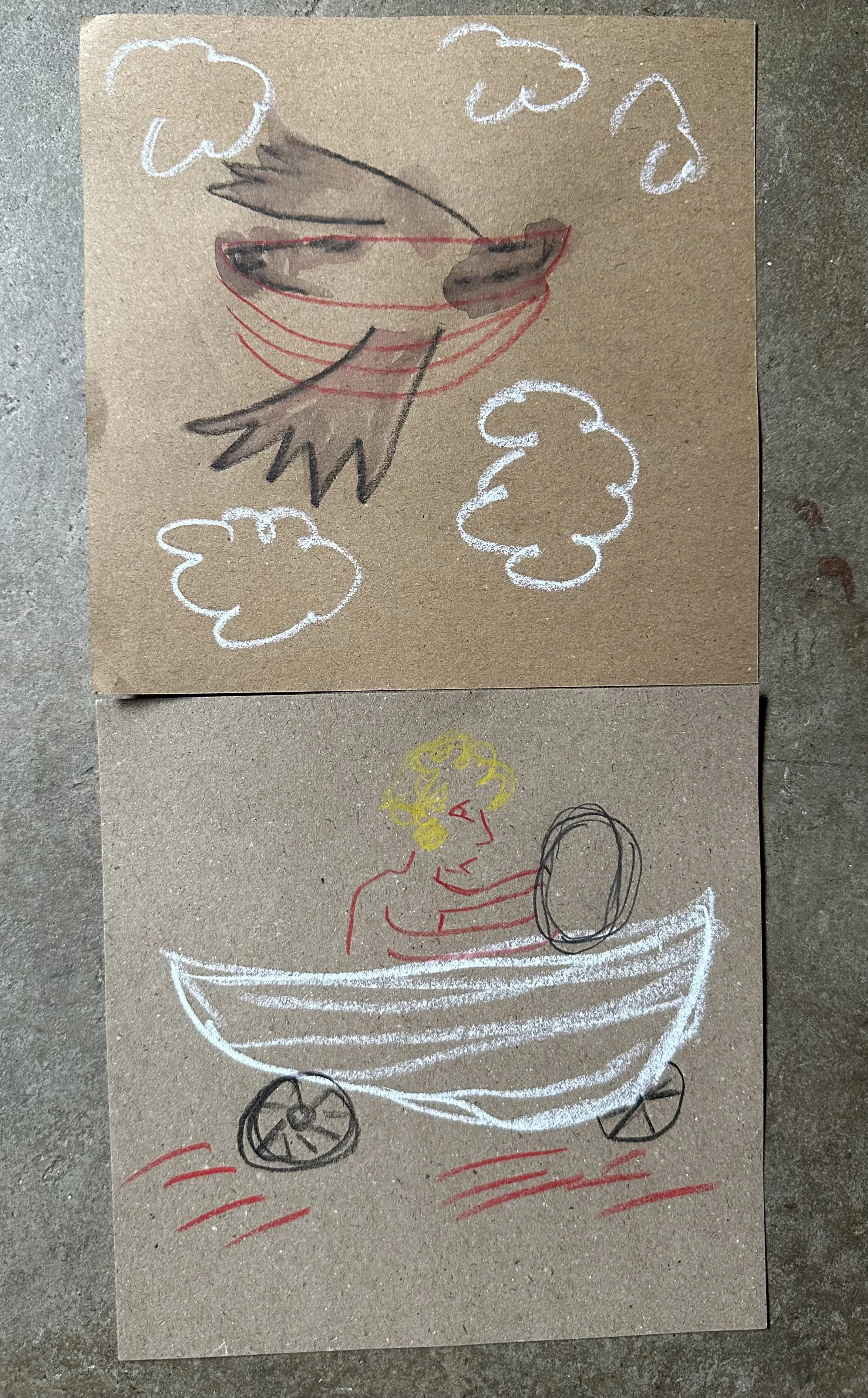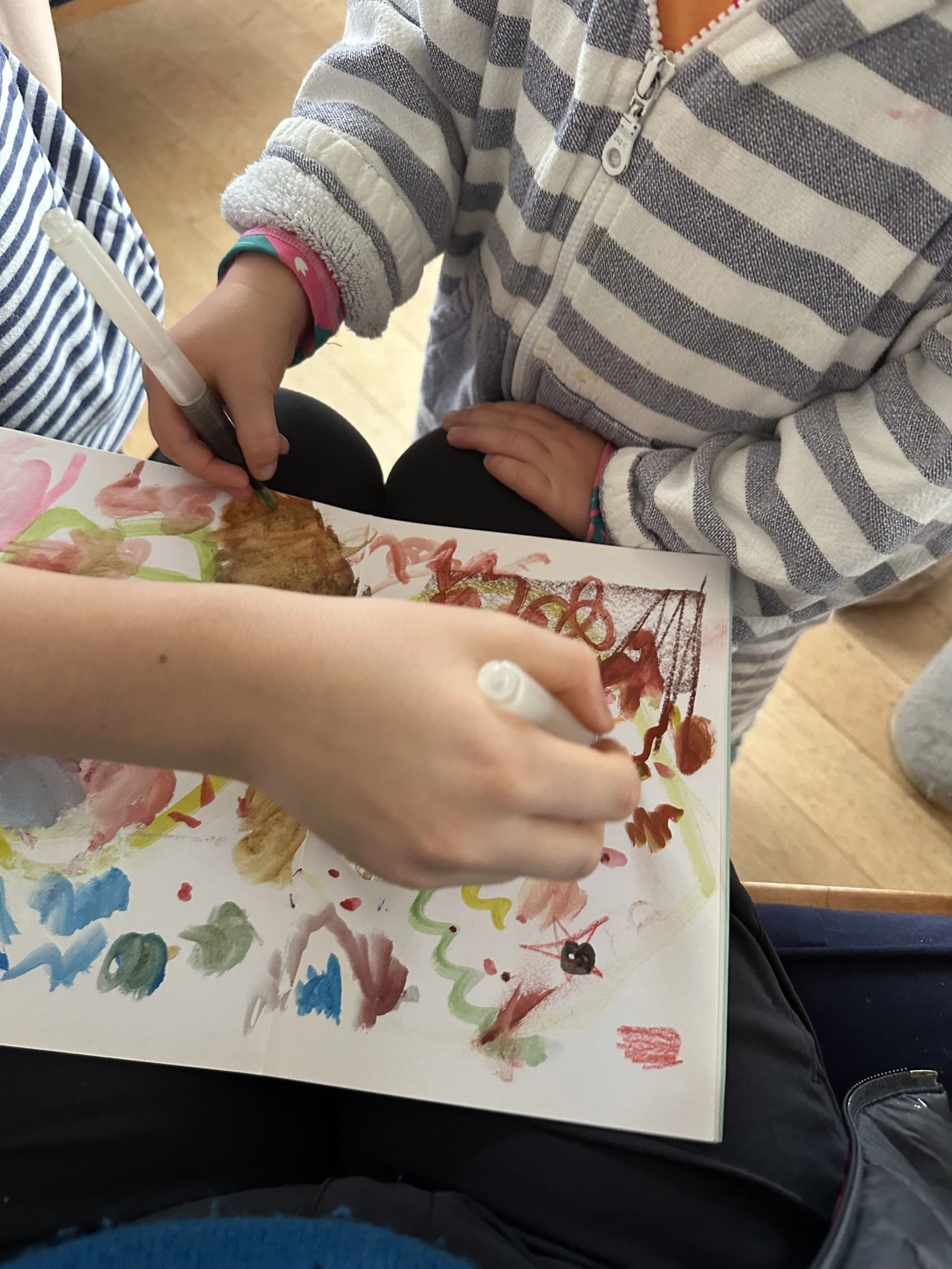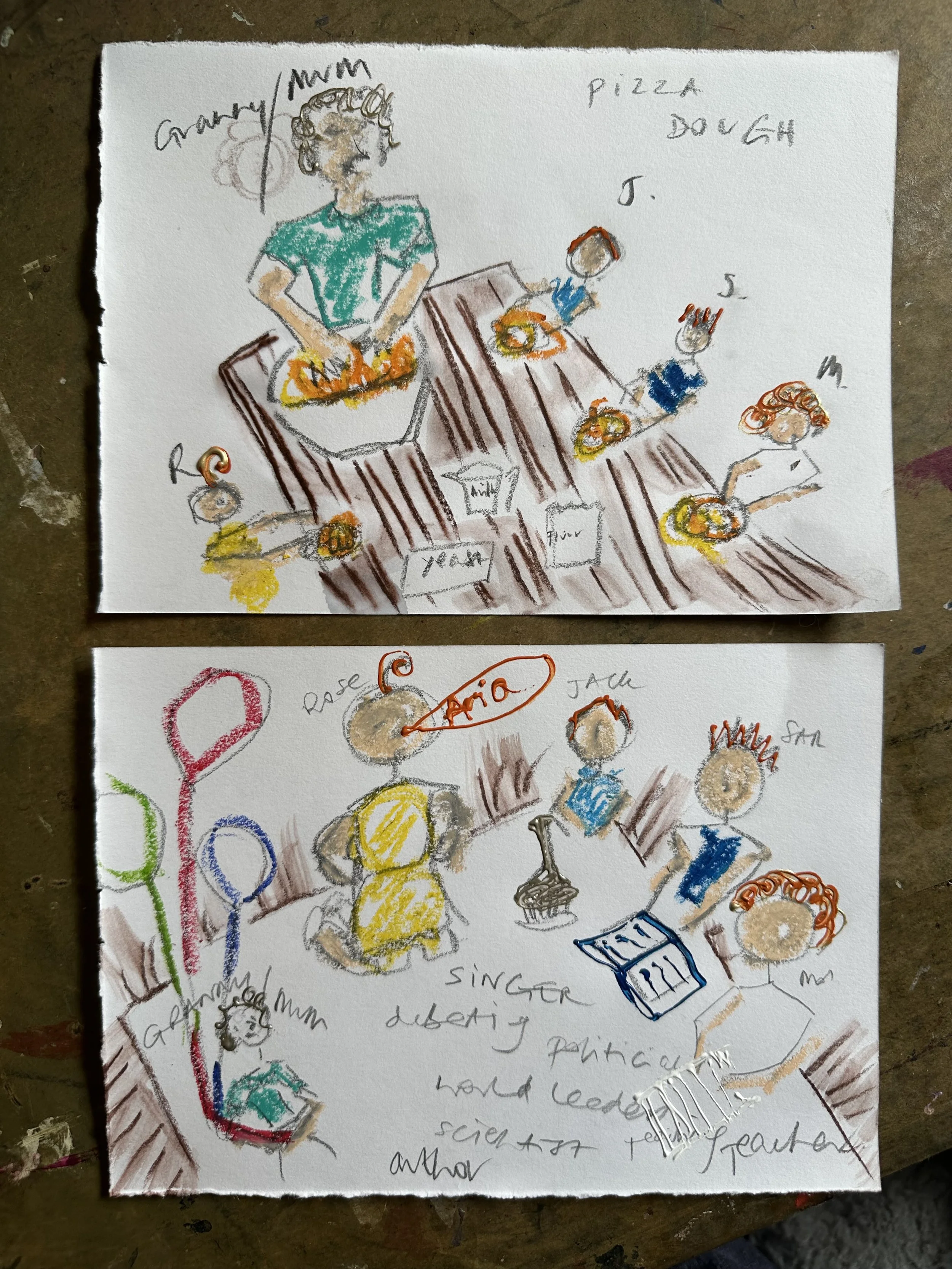Boys will be Boys and Girls will be Girls…
This summer, I joined an online course in Children’s Book Illustration with the Royal Drawing School, led by the wonderfully inspiring Emily Haworth Booth. What a joy it was to be part of a worldwide community of students, all exploring stories and characters through drawing.
To my surprise and delight, the course also sparked something unexpected: my grandson Sam became so captivated by what I was doing that he created a book of his own during a recent visit—with just a little guidance from me.
About the Course
I was drawn to Emily’s class because it promised something very different from other online courses I had taken. I’d worried that I might struggle with imagination—how do you conjure up a story from scratch? But Emily guided us gently, through exercises that opened up possibilities I hadn’t seen before. Before long, ideas were flowing, and my original plan to use Molly’s two imaginary friends shifted into something new. Quite naturally, Molly’s companion Bunny became the heart of my illustrations—a character I’ve “known” since the day she was born.
The international mix of students was fascinating. Only two of us were grandparents, but that made the experience even richer. I wasn’t just learning to draw—I was also remembering, rediscovering, and sharing.
Inspiration & Memories
One of the unexpected gifts of the course was how it brought back long-lost memories. I was reminded of my pet guinea pig, Pongo, who once travelled with me in a cage all the way from Norfolk to my first boarding school, Knighton House in Dorset. Halfway through the journey, my father and I stopped at our London house and let Pongo out to stretch his legs in the kitchen—where he promptly disappeared behind a huge fridge. For a moment, we thought we had lost him forever!
These small but vivid fragments of memory resurfaced during the course, gently feeding into my illustrations. They reminded me to stay open about how a story might develop, and not to cling too tightly to plans.
Family Connections
When I told my grandsons about the course on Facetime, they were curious. On his next visit, Sam asked to see my drawings. Then, to my delight, he asked if he could make some of his own. I gave him several prompts—similar to those Emily had given us—and he quickly began sketching and writing responses. Soon he was creating a story about a village made of metal and vegetables, especially carrots and cucumbers.
The vegetables weren’t random. Earlier that week, Sam and his brother Jack had helped harvest cabbages, carrots and cucumbers at the Nuthurst Community Allotment, where excess produce is donated to the local food bank. Real life was seeping into his story, just as it had with mine.
We glued Sam’s illustrations onto folded paper, stitched them together, and created his very first handmade book. Watching him switch from pencil to coloured crayons, inventing characters and places as he went, was deeply rewarding. Jack, a talented artist himself, also joined in, though less intensely. It felt like a family chain of creativity stretching from my children to my grandchildren.
Jack joined in with his drawings
Reflections & Next Steps
The course has opened something new for me. I’m tempted to develop the Bunny story further—perhaps even weave in Jaffa, the three-legged cat who lives with Molly’s family. I’ve also realised how playfulness can enrich my own practice, even in weaving and textiles, which some might consider “girls’ work.” But of course, art has no such boundaries.
Watching Molly make marks with my favourite Viarco Tailor Shape tools reminded me how much children absorb and mimic the enthusiasm of adults. Her imaginative tale of a colour-changing boat was as inventive as Sam’s metal-and-vegetable village. Boys may gravitate toward one kind of storytelling, girls toward another—but more than that, all children (and grown-ups too) thrive when given permission to play, invent, and dream.
If Sam and Jack were sitting here now, I’d simply tell them: keep playing. Creativity is play in its purest form, and play is something we should never grow out of.
The Gift of Storytelling
What began as a structured illustration course has become something much bigger: a rediscovery of memory, play, and the joy of storytelling across generations. It reminded me that creativity has no age limits and no rigid categories. Boys will be boys, girls will be girls—but most importantly, children (and adults too) will always find ways to imagine, to make, and to share stories. And that, I think, is the real gift of this journey.
Top Tips for Artists Who Want to Start Storytelling
Start with a Character You Know – a pet, toy, or figure from your own artwork.
Mine Your Memories – small, vivid moments from childhood often spark rich narratives.
Play with Prompts – ask simple questions: Where do they live? What do they love? What do they fear?
Let Real Life Sneak In – everyday experiences give stories authenticity.
Don’t Worry About “Perfect” Plots – begin with fragments; stories will grow naturally.
Mix Words and Images Freely – let text and sketches feed off each other.
Stay Playful – curiosity and surprise keep creativity alive.
Share the Process – show your stories to others; storytelling is about connection.

